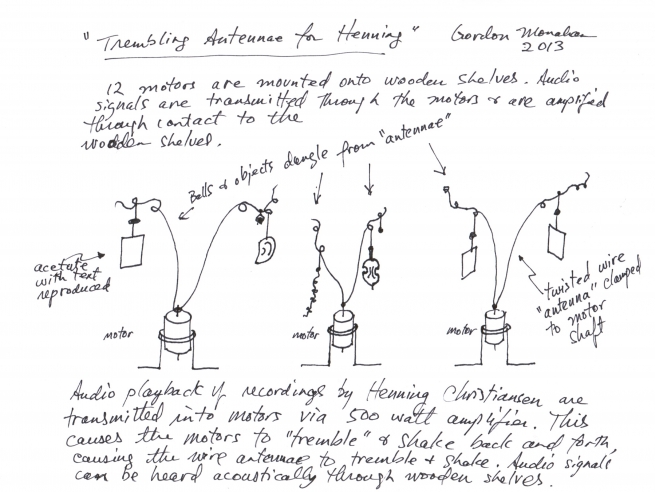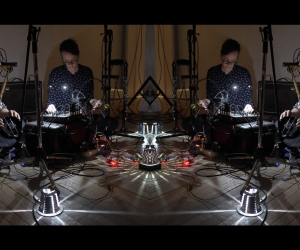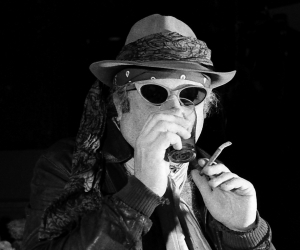
Gordon Monahan’s voice floats to me across the Internet from his farm, the Funny Farm, his home base in Meaford, Ontario.
Monahan was recently awarded a 2013 Governor General’s Award in Visual and Media Arts, and is already planning a series of installations for 2013, the soonest of which will be a piece for Hammer Without a Master, a festival occurring on the Danish island of Møn in June 2013. The festival marks the inauguration of the archive of the late Danish sound artist and Fluxus member Henning Christiansen.
Monahan’s piece—tentatively titled Audio Kinetic Motors—plays recordings of Henning’s work through motors acting as loudspeakers, a technique that Monahan has been tinkering with for the past several years. Low, raking lights will cast long shadows on the walls of vibrating antenna-like wires sprouting from the motors. Suspended from the antennas will be bells and other objects related to Christiansen’s body of work.
On its path to my living room in Sweden, Monahan’s voice is changed, dropping syllables at Internet-routing points along the way, adopting otherworldly characters as the software tries to get his words efficiently to my ears. His voice becomes something intangible, something totally at odds with the solid, physical nature of his installations.
I ask him about this thing that causes his work to stand out from many sound artists: his firm engagement with the physical.
MONAHAN: One way that I found that I could increase an awareness of sound was to reduce the musical structure but also increase perspectives towards the physicality of the sound. There’s a very specific physicality to different pieces that I’ve done, and that’s because I’ve consciously tried to focus on the physicality in order to draw attention to the sound itself, but also to draw attention to the fact that sound requires a physical movement to take place. Sound is the physical movement of pressure waves in the environment or acoustic space, so sound is inherently physical to begin with. If we could see the sound we would see these waves moving around in the space and it would be very obvious to us that sound in itself is physical.
There’s also a relationship to gesture. When you make a physical gesture, like when you play a musical instrument, you’re basically channelling very specific physical gestures. You’ve trained yourself to develop a sophistication and control of those physical gestures in order to create the music that comes out of your instrument. But you can take the music away for a minute and say, “You’re physically moving your body with a sound sculpture thing that may take the form of a clarinet, trumpet, piano, drum, whatever.” I tend to stand back and say, “A drum is not a drum, it’s a sound sculpture, and I’m going to integrate physical gestures to activate the sound that is inherent in that sound sculpture.” And if you can take that perspective, then you can find novel ways of using instruments in ways that weren’t initially intended.
McCALLUM: Of course we don’t only hear through our ears. The physical nature of sounds means that we hear through our bodies—and there’s also crosstalk between the sense, the impact of the visual on how and what we hear.
MONAHAN: When I develop visual elements in my installations or performances, I’m very careful about developing those visual elements very specifically so that they relate directly to the sound or the process of the sound, or a representation of the sound. Ultimately, when I do physical pieces it’s not about what they look like; it’s about how they relate to the sound.
I always like pointing out that sound and music is invisible. You can’t see music; and you can’t see sound, but you can visualize it. If you close your eyes, you can imagine seeing it.
Monahan’s installation will be presented at the festival Hammer Without a Master, taking place in Askeby, Denmark, on the island of Møn, from June 6 to August 11, 2013.


